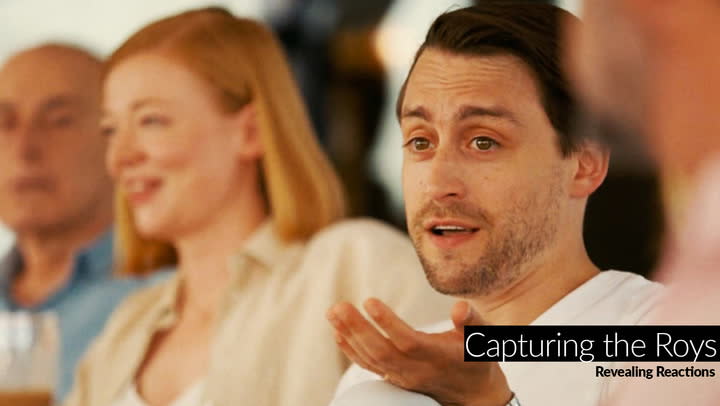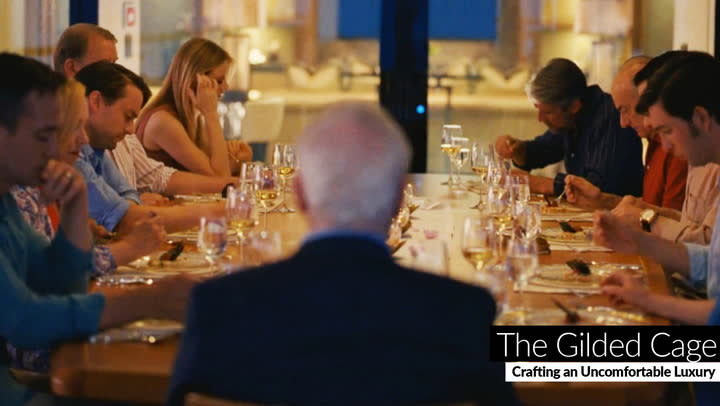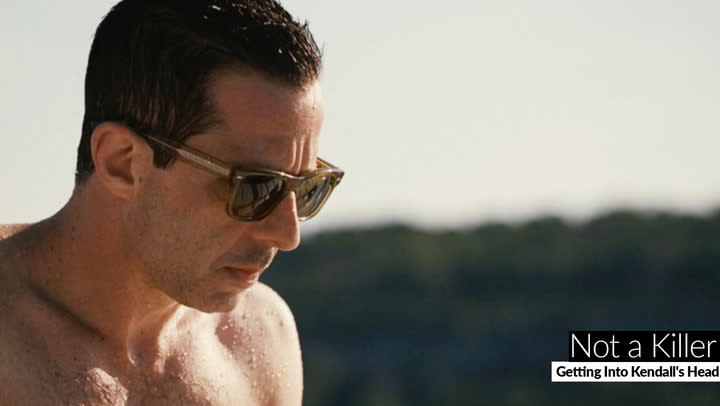How ‘Succession’ Built a ‘Killer’ Season Finale

“Deep Dive” is a in-depth podcast and video essay series with the stars, creators and crafts team behind an exceptional piece of filmmaking. For this edition, the IndieWire Crafts team partnered with HBO to take a closer look at the Season 2 finale, Episode 10 of “Succession” — “This Is Not for Tears” — with creator Jesse Armstrong, executive producer and director Mark Mylod, actors Brian Cox and Jeremy Strong, as well as seven members of the crafts team.
It was the season finale that had everyone talking, with an ending that was both shocking and, in retrospect, a completely logical conclusion for Logan (Brian Cox), Kendall (Jeremy Strong), and the rest of the Roy family. Now climb aboard their $150 million yacht to find out how such a perfect episode of television was made.
More from IndieWire
In the podcast below, the filmmakers, along with actors Brian Cox and Jeremy Strong, pull back the curtain on filming the iconic “You’re not a killer” scene as well as Logan’s final smirk. Editor Bill Henry reveals the ways he needed to pull back in the editing room, even losing parts of scenes, to ensure what happens at the press conference remained a surprise, but still stayed true to Kendall’s journey to betray his father. Composer Nicholas Britell shares the music he wrote to capture the demons that brought Kendall to this dramatic decision.
You can listen to the podcast above, or by subscribing via Apple Podcasts, Spotify, or Overcast.
What you learn in the podcast above is how an episode of “Succession” gets made: How Armstrong intentionally over-writes episodes that he, Mylod, and the editors will trim whole scenes from in the editing room, as the show is allowed to constantly hone TV’s sharpest blade cuts. What’s remarkable — and is reflected in the video essays below — is how this applies at all stages of creation. “Succession” is a tightly structured piece of storytelling that is kept fresh by creatives who are constantly able to improvise and react to what unfolds. Adds Armstrong, “[Our] craftspeople are doing things that you couldn’t verbalize because they do them with rhythm. And they’re [involved] with all the choices that are there to be made, and you’re in sync with them — it just means that my work is much easier.”

Capturing the Roys: Revealing Reactions
On “Succession,” scenes are shot by two to three camera operators who are given a tremendous amount of freedom and encouragement to follow their instincts. Listening and reacting to characters, they pan and reframe to capture what they instinctively feel is most interesting.
“The camera reacts with the speed of a human being rather than somebody who knows what’s going to happen next,” Armstrong said. “And that lets the comedy and drama play in a way which I think subliminally makes you feel like you’re in the room.”
This means the camera operators will often move off the character who is speaking, putting as much significance on those reacting to the speaker.
“It isn’t just, ‘OK, grab that line.’ It’s as much about finding what’s going on underneath the surface,” Mark Mylod, who directed the Season 2 finale, said. The real gold is when the operators capture a character reacting “when they don’t think they’re being watched by other characters, but the camera is catching that moment, [and] we as an audience are let into their unconscious in a way. It’s a window into their souls.”
With three cameras rolling, scenes around the dinner table offer a lot of windows into a number of different souls. “With the amount that we shoot, and the number of cameras, and the number of takes when we have the time, and the level of improvisation and the subtlety of the actors who we’re working with,” Armstrong said, “it is infinite how you could cut the scenes. So, when I think of that, it makes me want to throw up.”
How to bring all these revealing moments together is the job of “Succession” editors Ken Eluto and BIll Henry. In the video essay above, Henry takes you inside the important breakfast table aboard Logan’s yacht in the Season 2 finale and explains how the syncopated rhythms of a scene like that are akin to cutting a musical.

The Gilded Cage: Crafting an Uncomfortable Luxury
It’s part of the DNA of “Succession” that viewers travel with the Roy family to places of extreme wealth and privilege. In a serialized narrative with virtually no standing sets, most new episodes take audiences somewhere new and extravagant, and the Season 2 finale is no exception as everyone climbs aboard Logan Roy’s $150 million yacht.
But how does the filmmaking team behind “Succession” avoid fetishizing the extreme wealth they’re satirizing? Just the act of peeling back the curtain on the extreme luxury we never get to see has a natural voyeuristic pleasure for the viewer.
In the video essay above, production designer Stephen Carter, executive producer and director Mark Mylod, cinematographer Patrick Capone, and series creator Jesse Armstrong analyze how a subtle use of filmmaking craft directs the viewer to focus on the discomfort the Roy family feels inside its gilded cages.
“We want to make sure that the audience, rather than being sort of seduced by the wealth porn side of things, really feels the neglect or the unimportance to them of all this expensive paraphernalia,” Carter said.

Not a Killer: Getting Into Kendall’s Head
There’s a darkness that hangs over Kendall Roy (Jeremy Strong) in Season 2 of “Succession.” Ever since the car crashed into the lake at the end of Season 1 — resulting in the death of the waiter and the subsequent cover-up of that death by Logan — Kendall has been mentally and spiritually tortured. In the video essay above, we go inside how Mylod and composer Nicholas Britell bring the viewer inside that torment by connecting it to the moment that caused it.
“Whenever we put the character in water, we make him vulnerable,” Mylod said. “We metaphorically crucify him, in the water.”
Composer Nicholas Britell describes the music he wrote for the Season 1 finale’s car crash as Kendall’s “true moment of darkness.” And it’s that music, “Kendall’s Return,” that the composer and editor Bill Henry bring back at key moments of Season 2 where that darkness, and the memory of the young man’s death, weighs particularly heavy on Kendall.
In fact, it’s that music that accompanies Kendall as he enters Logan’s state room for the famous “You have to be a killer” scene during the Season 2 finale. In the second part of this essay, we go behind the shooting of that scene with Mylod, Strong, Henry, and cinematographer Patrick Capone.
VIEW ALL DEEP DIVE COVERAGE
Best of IndieWire
Sign up for Indiewire's Newsletter. For the latest news, follow us on Facebook, Twitter, and Instagram.

 Yahoo News
Yahoo News 
